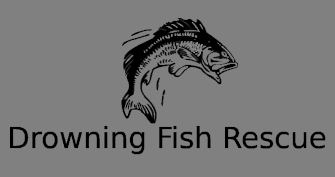Bluegill fishing is a favorite pastime for anglers of all skill levels, offering fast action and family-friendly fun. Using a slip bobber is one of the most effective techniques for catching these feisty panfish in rivers and backwaters. This guide covers where to find bluegill, how to rig a slip bobber, recommended knots, the ideal rod and reel setup, and top slip bobber products available on Amazon.
Why Use a Slip Bobber for Bluegill?
A slip bobber allows anglers to fish at precise depths, adjusting easily to target bluegill suspended in the water column or near the bottom. Unlike fixed bobbers, slip bobbers slide along the line, making them ideal for deep or shallow water in rivers and backwaters. They’re especially effective in spring and summer when bluegill are active, feeding on insects, worms, or small baitfish. According to FishSA, slip bobbers are a top choice for their versatility in varying conditions.
Where to Find Bluegill in Rivers and Backwaters
Bluegill thrive in warm, calm waters with ample cover and food sources. In rivers and backwaters, focus on these key locations to maximize your catch:
Rivers
- Slow-Moving Pools and Eddies: Bluegill avoid strong currents, preferring calm pools or eddies behind rocks, logs, or river bends where food collects.
- Vegetation and Structure: Look for submerged weeds, lily pads, or overhanging trees where bluegill hide to ambush prey or seek shade.
- Shallow Banks: In spring, bluegill move to shallow, gravelly banks for spawning, often in 2-6 feet of water.
- Confluences: Areas where tributaries meet the main river attract bluegill due to increased food from converging currents.

Backwaters
- Stagnant Sloughs: Backwaters with minimal flow, such as oxbows or side channels, are bluegill hotspots, especially near vegetation or woody cover.
- Shallow Flats: Look for flats with emergent plants like cattails or water lilies, where bluegill feed on insects and small crustaceans.
- Docks and Man-Made Structures: In backwaters, docks or pilings provide shade and attract bluegill, especially in summer.

Recommended Slip Bobbers
Choosing the right slip bobber enhances your fishing experience. Here are top options available on Amazon:
- Thill Pro Series Slip Bobber: Sensitive and durable, ideal for detecting light bites. Buy Thill Pro Series Slip Bobber.
- Eagle Claw Slip Bobber: Affordable and versatile for shallow or deep water. Buy Eagle Claw Slip Bobber.
- Betts Slip Bobber: Brightly colored for visibility, great for beginners. Buy Betts Slip Bobber.

Setting Up a Slip Bobber Rig
To rig a slip bobber, follow these steps:
- Thread a bobber stop (string or rubber) onto your main line, followed by a small bead.
- Slide the slip bobber onto the line. The stop sets the depth, allowing the bobber to slide freely.
- Tie a small barrel swivel to the end of the main line to prevent line twist.
- Attach a 12-18 inch leader (4-6 lb. test) to the swivel, then tie on a #6 or #8 Aberdeen hook.
- Add a split shot weight 6-12 inches above the hook to sink the bait.
- Bait with live worms, crickets, or small jigs tipped with wax worms.
Adjust the bobber stop to fish at the desired depth, typically 1-4 feet for bluegill in shallow rivers or backwaters.
Best Knots for Bluegill Fishing
Strong, reliable knots ensure you don’t lose fish or gear. Use these knots for slip bobber fishing:
- Improved Clinch Knot: Ideal for tying the hook to the leader. It’s simple and strong for light lines (4-6 lb. test). Learn the Improved Clinch Knot.
- Palomar Knot: Perfect for attaching the swivel to the main line. Its double-line design adds strength. Learn the Palomar Knot.
- Uni Knot: Versatile for tying the leader to the swivel or securing the bobber stop. Learn the Uni Knot.
Practice these knots to ensure secure connections, especially with light tackle for bluegill.
Ideal Rod and Reel Combo
Bluegill are small but scrappy, so light, sensitive gear is best. Here’s the recommended setup:
- Rod: A 5-6 foot ultralight spinning rod with a soft tip for detecting bites and casting small baits. Try the Ugly Stik Elite Spinning Rod.
- Reel: A size 1000-2000 spinning reel with smooth drag for light lines (4-6 lb. test). The Pflueger President Spinning Reel is a great choice.
- Line: 4-6 lb. monofilament or fluorocarbon for sensitivity and low visibility. Braid (6-8 lb.) with a fluorocarbon leader works for heavy cover.

Techniques for Slip Bobber Fishing
Depth Adjustment: Set the bobber stop to fish just above the bottom or near cover where bluegill feed. Adjust frequently to find the strike zone.
Casting: Cast near vegetation, docks, or structure, letting the bait sink naturally. Watch for the bobber to twitch or submerge, indicating a bite.
Retrieve: Use a slow, steady retrieve or let the bait sit still. In rivers, cast upstream to let the current carry the bait naturally.
Stealth: Bluegill spook easily in clear water. Approach quietly and use light lines to avoid detection.
Seasonal Tips
In spring, target shallow spawning beds in backwaters with small baits like worms. In summer, fish deeper pools or shaded areas with crickets or jigs. In fall, focus on river confluences or backwater flats where bluegill school up to feed.
Conclusion
Fishing for bluegill with a slip bobber is a rewarding and accessible way to enjoy rivers and backwaters. By targeting calm pools, vegetation, and structure, using strong knots like the Improved Clinch or Palomar, and choosing the right rod and reel combo, you’ll be set for success. Shop top slip bobbers and gear on Amazon using our links, and get ready for a fun day on the water!
